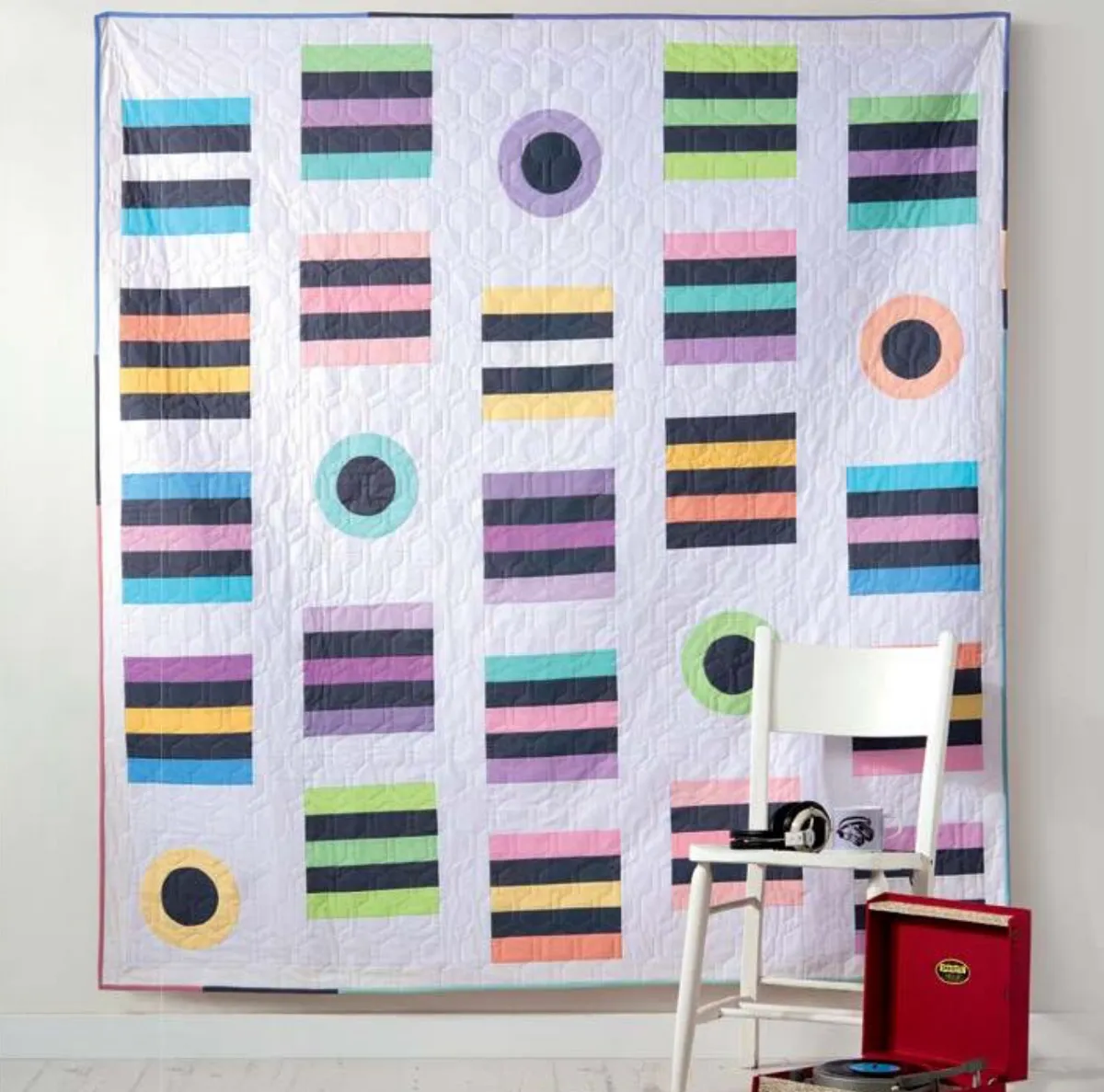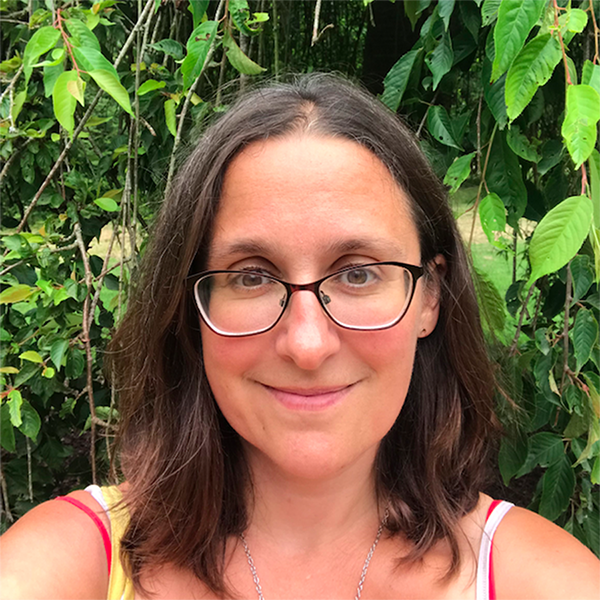How much fabric do I need for a quilt?
When it comes to buying fabric, how do you know how much to get so you’ve got enough but aren’t left with too many scraps? Most projects come with advice about how much fabric you need for the various parts of your quilt, but if you want to create your own design, then calculating how much fabric to buy can seem daunting. But don’t worry! We've got together with the Beginner's Guide to Quilting, to bring you this handy guide to help plan your project.
How big will your quilt be?
Before you buy anything, sketch out a design for your project. There’s a list of common UK and US quilt sizes below to get you started, but you can make a quilt in any size you like – you might want to add extra drape around the edges of a standard size, depending on your design.
If you’re making a bedspread, measure the length, width and height of your mattress, then add as much extra fabric as you’d like to allow for the quilt to hang down below the edges. Or you can always just measure a bedspread that you already have and use that as your finished size guide!
If you’re not making a bedspread, then you’re free to decide on the size of your playmat, wall-hanging or whatever it is. You’ll just need to determine its length, width and border circumference.
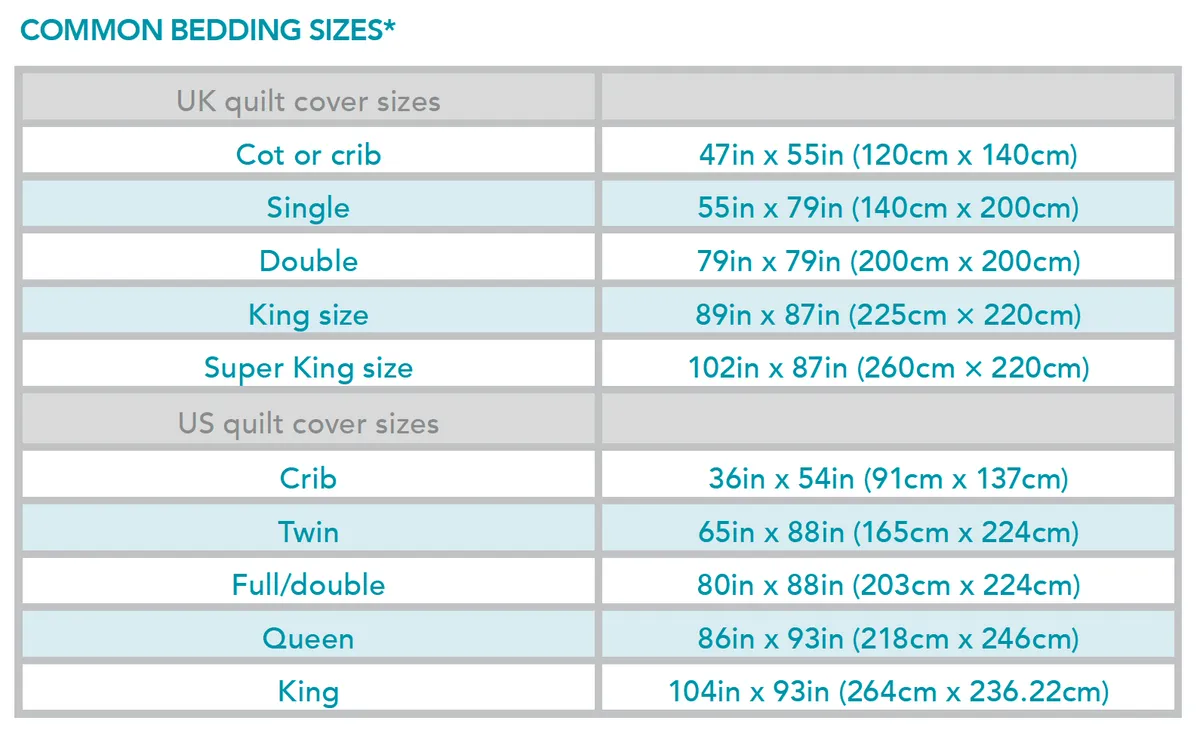
*Before you buy, check the size against the bed you’re making for. Remember the quilting saying: “measure twice, cut once!
How much fabric do you need for a quilt?
Once you’ve got an idea of your finished quilt size measurements, you can work out how much fabric you’ll need. You’ll need one or more fabric pieces to sew together to make the backing, plus fabric for the quilt top and binding fabric to go around the edges.
Always buy slightly larger pieces of fabric than the pattern dictates. Cotton fabrics and wadding will shrink when washed, so it’s a good idea to multiply quilt measurements by 1.05 to allow for 5% shrinkage. You should also leave a little extra fabric for seam allowances.
The more complicated your design, the more extras you’ll need for these. If you’ll be working with lots of blocks made up from many small pieces of fabric, you’ll need to allow for each piece’s seams.
To work out how much fabric you’ll need for the quilt top, draw a sketch of your quilt top design and add in measurements for the different parts. Start with the border and outer seam allowance, then take this away from the quilt width, and you’ll know how wide an area you have to fill with blocks or shapes. You’ll probably find it easiest to make your blocks or shapes to a standard size that’s easy to work out, then adjust your border strips to enable your smaller units to fill the width of the quilt.
How much fabric do I need for a quilt backing?
For the back of a quilt, plain calico is a popular choice and is often the cheapest option. Alternatively, pick a neutral cotton fabric that will complement the colours in the front of your quilt.
If you’d like something more lively or have the option of a reversible quilt, simply opt for a busier print. You’ll find most of the fabrics at your local haberdashery come in 42–44in wide bolts.
If you’re making a bed quilt, this will mean you have to join more than one piece of fabric together to make the final backing piece. To avoid this, you can buy extra-wide backing fabric in 60in, 90 inch, 108in and 116in widths, but it’s worth noting that the colour and print choices for these are usually more limited.
As a rule, your backing fabric should be at least 2in larger than the size of your quilt top all the way around. This allows for the fabric reducing (being pulled inwards slightly) once you’ve finished the quilting part of the process (the stage when you stitch through the layers). If you’d prefer to get someone else to do the hard bit, there are seamstresses who offer a long-arm quilting service – this means you send them all the parts of your quilt and they’ll assemble and stitch the quilt together for you with decorative designs. If you go for this option, then you’ll need your backing fabric to be at least 4in larger all round than the quilt top.
Prepare the backing fabric by trimming off the selvedges and pressing. Using 42in-wide fabric If your quilt top is 42in or less on one side, then you’ll only need one length of backing fabric.
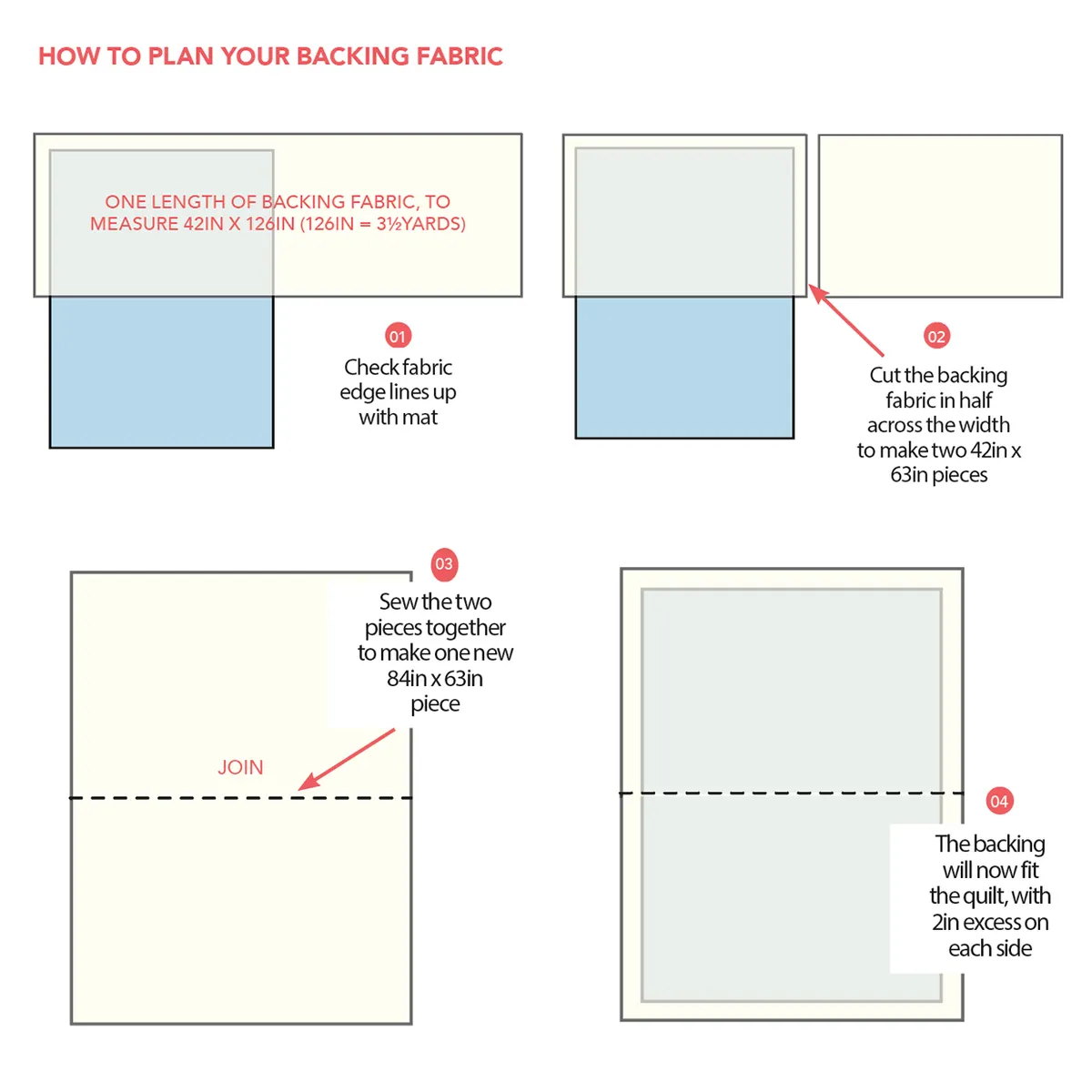
So, for example:
For a 36in x 50in quilt top, you’ll need 1½yds (54in) of 42in wide fabric, leaving you with a few extra inches around all edges.
If your quilt is larger than 42in, for example, 59in x 80in, you’ll need 3½yds of 42in wide fabric. Cut the yardage in half and then re-join along the long edges using a slightly larger seam than usual. When joined this way, they make a piece 63in wide by 84in long (less a little for the seam). This is enough for the length of the quilt. Press the seam open to keep the backing flat. Using 90in-wide fabric If you buy backing fabric that’s 90in wide then you won’t need any joins to make a 59in x 80in quilt, as the width of the backing fabric is enough for the length of the quilt (80in). As a result, you’ll only need to buy a 59in length, plus a few inches extra for around the edge of the quilt, for example 1¾yd (63in).
How to buy fabric for a quilt
Buying material for a quilt and not sure where to start? Let us explain how to shop with confidence! The measurements by which fabric is sold can seem a bit baffling when you first hit the shops.
Fat quarters, jelly rolls, charms… It’s a strange way to talk about lengths of material. They’re actually very useful names, though, as you can be sure you’ll be getting squares or strips of fabric in very specific sizes, designed especially for quilting.
What is the standard width of a bolt of fabric?
If you’re buying fabric off a roll (or ‘bolt’), then you’ll usually buy it by the yard (36in/91cm) or the metre (100cm/39in).
This is only the length of the fabric you’re buying, though – the width depends on the width of the roll, which can be a yard wide but is also often 44in (112.5cm) wide, or sometimes a little longer than that.
Check the information on the end of the cardboard tube around which the fabric is wrapped, or ask the store to measure it for you so you can be sure how much you’re buying. If you’d like the convenience and variety of ready-cut patchwork pieces, or don’t need a whole yard of a particular fabric, then you can also buy pre-cut pieces.
Take a look at our guide to the most common fabric sizes below.
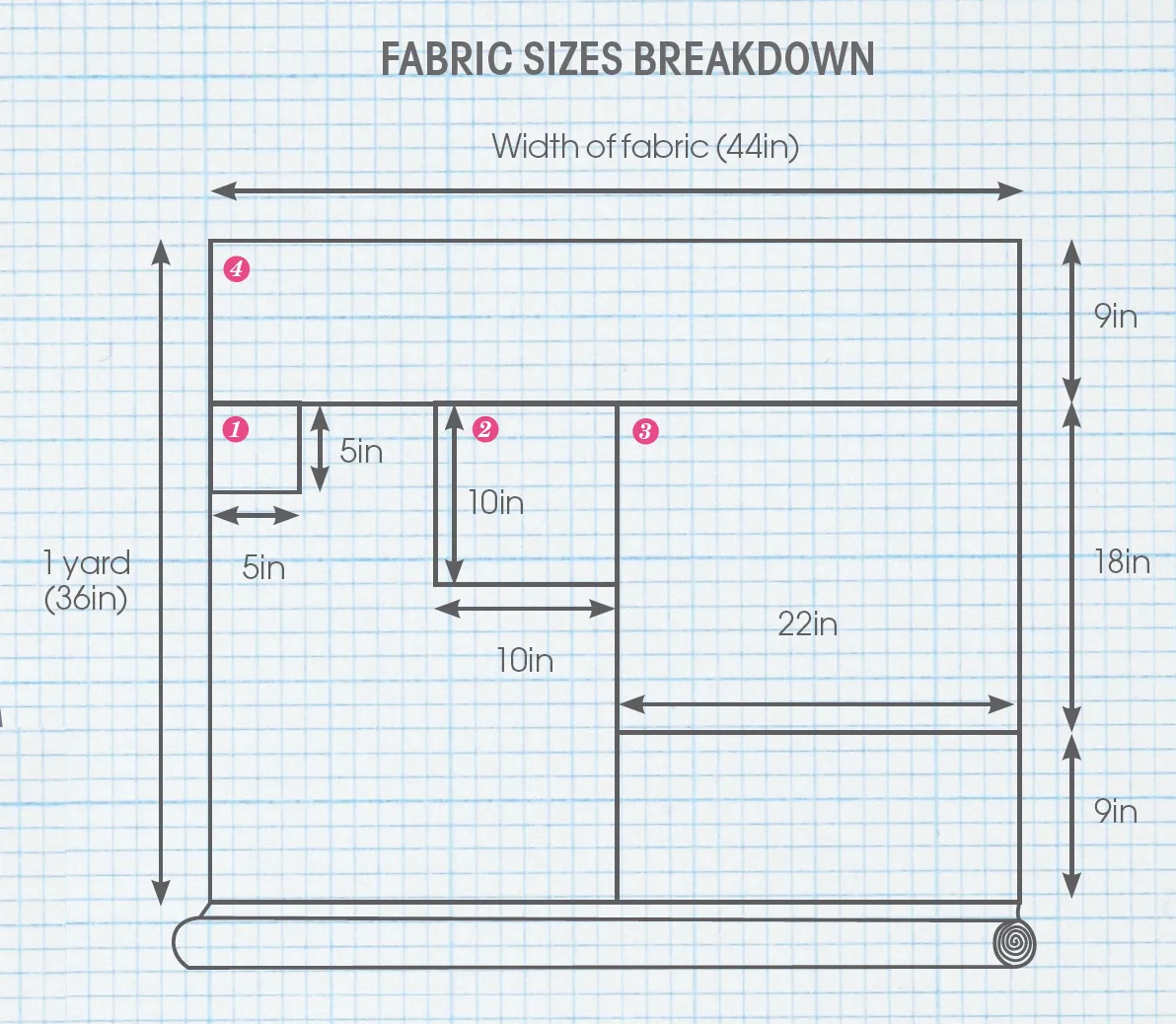
How big is a charm square?
Produced by fabric company Moda, a layer cake is a bundle of 10x10in fabric squares.
How big is a turnover?
Turnovers are 6in triangles that, when sewn together, make 5x5in squares, so they’re easy to use with charms.
How big is a fat eighth?
Half of a ‘fat quarter’, this is a piece of fabric measuring 9x18in.
How big is a fat quarter?
A quarter of a yard of fabric made by cutting half a yard in half across the length to give a piece of cloth that measures 18x22in. This means you can cut larger pieces than you would be able to from a regular (or ‘long’) quarter.
How big is a long quarter?
A quarter of a yard of fabric cut from the end of a bolt, so it measures 9x44in.
How big is a jelly roll?
A bundle of 20 to 40 strips of fabric that each measure 2½x44in. Jelly rolls were originally produced by fabric company Moda, but other companies also make similar bundles with names such as
Bali Pops, Stone Strips and Roll Ups.
How big is a honey bun?
Like a skinny jelly roll, a honey bun is a bundle of strips that are 1½in wide and 44in long.
How big is a dessert roll?
Also known as a ‘fat roll’, this is a bundle of 20 pre-cut fabric strips that are 5in wide and as long as the width of the fabric bolt (usually 44in).
Fabric buying guide: inches to centimetres conversion chart
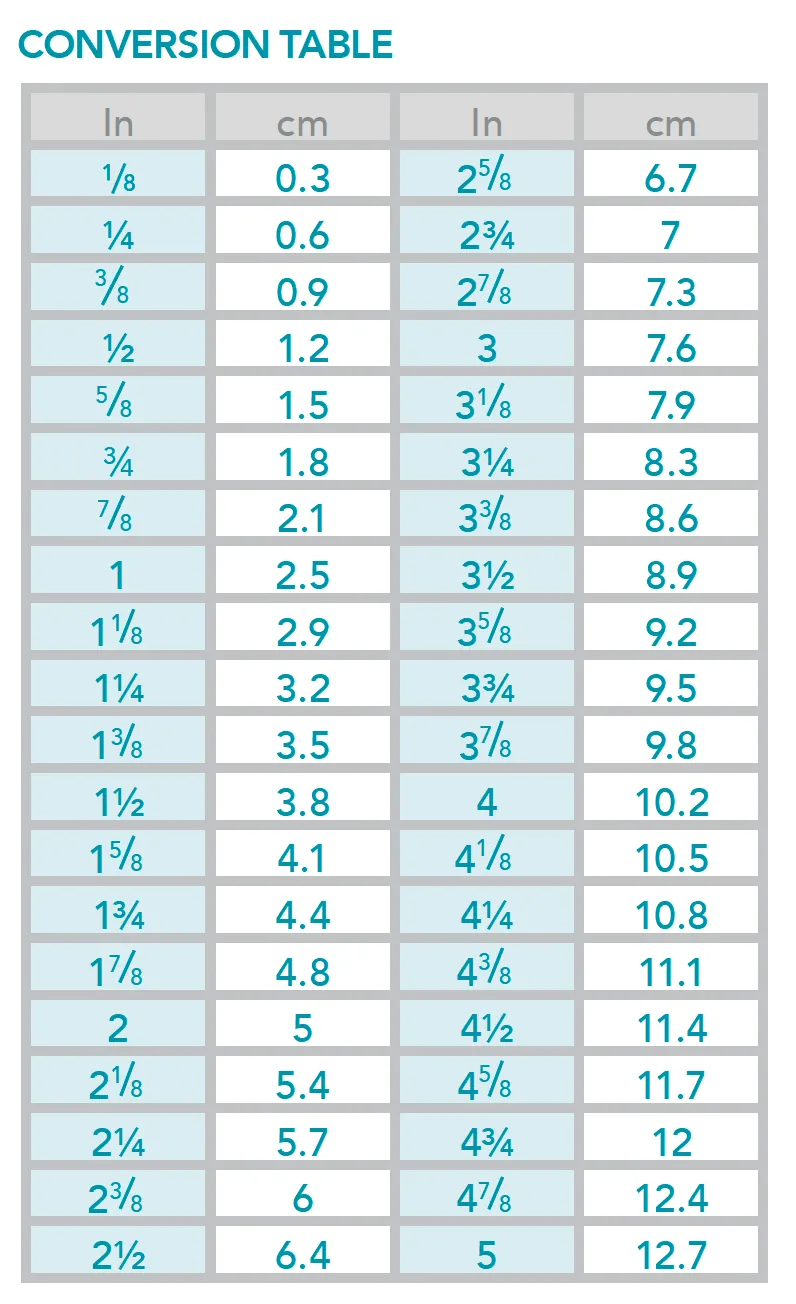
Never run out of fabric while quilting again
A little planning goes a long way; we're here to help you work out exactly how much fabric you need for your next quilt.
Jelly Roll quilt patterns to make and love
Get inspired by our favourite jelly roll quilts and find your next colourful project.
